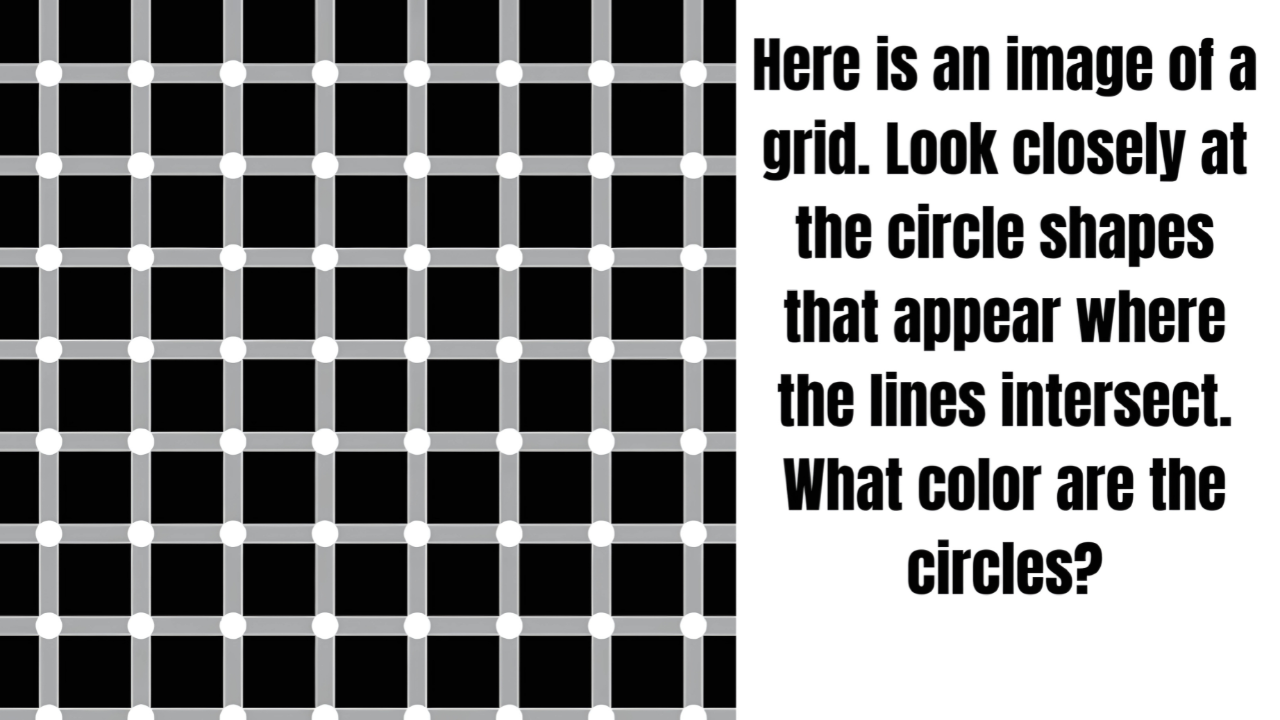Have you ever looked at a picture that seemed to move on its own? Or maybe you’ve seen faces hiding in everyday objects that shouldn’t be there at all. These fascinating experiences show us just how incredible our brains really are when it comes to seeing the world around us.
Optical illusions aren’t just fun party tricks or social media posts. They’re actually powerful tools that help scientists understand how our minds work and process visual information every single day.
What Are Optical Illusions Really?
An optical illusion happens when your eyes see one thing but your brain thinks it’s something else. It’s like your mind is playing a clever trick on itself without you even knowing it. Your brain doesn’t just passively look at things like a camera would.
Instead, it’s constantly making predictions and filling in gaps based on what it expects to see. This amazing process helps you navigate the world, but it can also lead to some pretty mind-bending visual experiences.
How Your Brain Creates Reality
Every second, your eyes are taking in millions of pieces of visual information. But here’s the surprising part – most of what reaches your eyes is actually pretty blurry and incomplete. Your brain is the real visual magician that creates the clear, detailed world you think you’re seeing.
This process happens so fast and automatically that you never notice it. Your brain is like a super-smart detective that pieces together clues to figure out what’s really going on in your visual field.
The Left Brain vs Right Brain Myth
You’ve probably heard people say they’re more “left-brained” (logical and analytical) or “right-brained” (creative and artistic). Many online tests claim they can figure out which side of your brain is dominant just by showing you optical illusions. But here’s the truth that might surprise you.
Modern science has shown that this popular idea is mostly not accurate. Your brain doesn’t really work like having two separate computers – one for logic and one for creativity.
Where This Idea Came From
The left brain/right brain theory started in the 1960s with a scientist named Roger Sperry. He studied people who had brain surgery that separated the two halves of their brain to treat severe epilepsy. His research was groundbreaking and important, but it got misunderstood over the years.
People took his scientific findings and created a simplified version that doesn’t match what we know about healthy brains today.
What Scientists Actually Found
In 2013, researchers looked at brain scans from over 1,000 people. They wanted to see if some people really used one side of their brain more than the other. The results were clear – there was no evidence that people are dominated by either their left or right brain hemisphere.
Both sides of your brain work together for almost everything you do. Whether you’re solving a math problem, creating art, or just having a conversation, networks throughout your entire brain are actively involved.
Different Types of Mind-Bending Illusions
Understanding the various kinds of optical illusions can help you appreciate just how complex and amazing your visual system really is.
Ambiguous Illusions
These are images that can be seen in multiple ways, and your perception often switches back and forth between different interpretations. The famous duck-rabbit picture is a perfect example – some people see a duck first, while others immediately spot a rabbit.
What you see first might reveal something interesting about how your brain processes visual information, but it doesn’t mean you’re more logical or creative than someone else.
Size and Shape Illusions
These illusions trick your brain about how big or long things really are. They show how much your brain relies on context and surrounding information to make sense of what you’re seeing. Two identical lines can look completely different lengths just because of what’s around them.
Your brain is constantly comparing things to figure out their true size and shape, and these illusions exploit that natural process.
Motion Illusions
Perhaps the most fascinating type are static images that appear to move or rotate. These illusions reveal how your brain processes information about movement and change in your environment. Even though the image isn’t actually moving, your visual system creates the sensation of motion.
These illusions work because of the way your brain predicts and processes visual signals related to movement.
What Illusions Actually Reveal About You
While optical illusions can’t tell you if you’re left-brained or right-brained, they can reveal some interesting things about how your unique visual system works.
Your Personal Perception Style
Some people naturally focus on small details first, while others take in the whole picture before examining specific parts. This difference has more to do with your individual neural pathways than with simple brain hemisphere dominance.
Your unique perceptual style influences how you interpret visual information and may connect to other aspects of how you think and learn.
How Attention Works in Your Brain
Many illusions show us how selective attention functions in your mind. Your brain is constantly filtering information, deciding what’s important enough to bring into your conscious awareness. This filtering process is so powerful that you can completely miss obvious things if your attention is focused elsewhere.
This explains why two people can look at the same optical illusion and see completely different things.
Cultural and Personal Influences
Your life experiences and cultural background also play a role in how you perceive optical illusions. People from different parts of the world might interpret the same ambiguous image differently based on their everyday visual environment.
For example, someone who grew up in a busy city might process certain visual cues differently than someone who spent their childhood in a rural area. These differences show just how much our brains are shaped by our experiences.
The Science Behind Visual Tricks
Scientists use optical illusions as research tools to understand fundamental aspects of how vision works. When your brain gets “fooled” by an illusion, it reveals important information about the neural mechanisms that create perception.
Predictive Processing
Your brain doesn’t wait passively for visual information to arrive. Instead, it’s constantly making predictions about what it expects to see based on past experiences. When these predictions don’t match reality, optical illusions can occur.
This predictive nature helps explain why context matters so much in how we see things.
Neural Adaptation
Some illusions demonstrate how your visual neurons adapt to continued stimulation. This adaptation prevents your visual system from becoming overwhelmed and helps it stay sensitive to changes in your environment. It’s like your brain has built-in adjustment mechanisms to keep your vision working optimally.
Real-World Applications
Optical illusions aren’t just entertaining – they have practical uses in various fields that affect your daily life.
Art and Design
Artists and designers use principles revealed by optical illusions to create visual effects that capture attention and guide viewers’ eyes. From website design to advertising, understanding how visual perception works helps create more effective visual communication.
Modern user interfaces often employ these principles to make apps and websites easier to use.
Medical Applications
Studying how people perceive illusions helps scientists understand visual processing disorders and develop better treatments. This research contributes to helping people with conditions like lazy eye and certain types of visual impairment.
Understanding normal visual processing is crucial for treating problems when things go wrong.
Testing Your Own Perception
While optical illusion tests can’t categorize you as strictly left-brained or right-brained, they can still offer interesting insights into your individual perceptual tendencies. What you see first in ambiguous images might reveal something about how your unique brain constructs visual reality.
The key is understanding that these differences reflect the wonderful complexity of human perception rather than simple categories or limitations.
The Integrated Brain Truth
The fascination with categorizing people as right-brained or left-brained persists because humans naturally like simple explanations. We enjoy placing ourselves into neat categories that seem to explain our differences and personalities.
However, your brain is far more complex and integrated than these popular theories suggest. The reality is that a healthy brain uses both hemispheres together for almost all tasks you perform throughout the day.
Creativity requires logic, and logical thinking often involves creative processes. Mathematical thinking uses spatial skills, while artistic expression employs analytical processes. Your brain is an amazingly integrated system that works as a unified whole.
FAQs
Can optical illusions tell me which side of my brain is dominant?
No, modern neuroscience has shown that the left-brain/right-brain dominance concept is largely a myth.
Why do I see different things than my friends in the same illusion? I
ndividual differences in perception reflect your unique neural pathways and past experiences.
Do optical illusions work the same for everyone?
No, cultural background, age, and personal experiences can influence how people perceive illusions.
Can practicing with optical illusions make me smarter?
While visual puzzles may help maintain cognitive flexibility, they don’t fundamentally change brain structure.
Are some people naturally better at solving optical illusions?
Some individuals may be less susceptible to certain illusions due to specific visual processing abilities.
Do optical illusions reveal anything meaningful about personality?
They may show perceptual tendencies but don’t determine personality traits or cognitive abilities.
Why do some illusions make me feel dizzy or uncomfortable?
Strong motion illusions can trigger your brain’s motion detection systems, causing mild disorientation.
Can children see optical illusions the same way adults do?
Children’s developing visual systems may process some illusions differently than mature brains.
The next time you encounter a fascinating optical illusion, remember that you’re experiencing more than just a visual trick. You’re getting a glimpse into the remarkable way your brain constructs your perception of reality and the extraordinary complexity of human consciousness.

